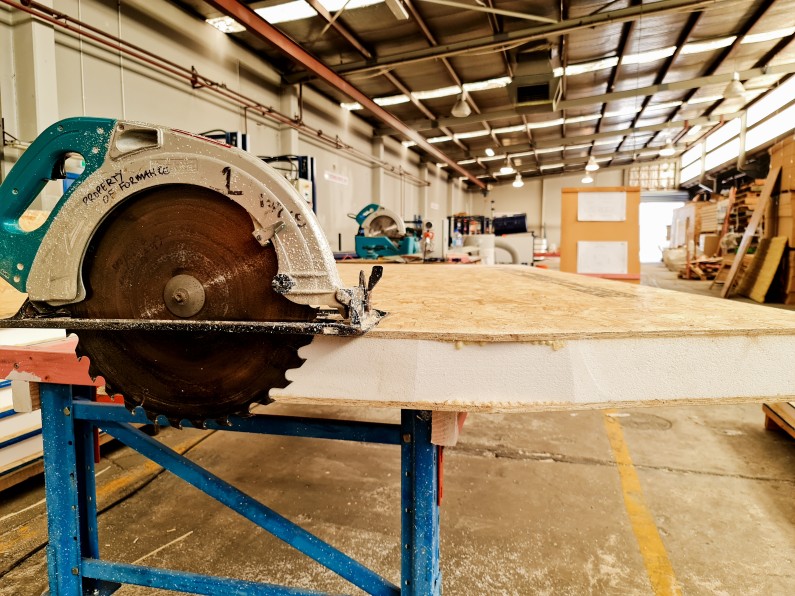Can I Make My Own SIP Panels?

The idea of creating your own Structural Insulated Panels (SIPs) might seem like an appealing DIY project. However, attempting to manufacture them yourself comes with significant challenges and risks. Here’s why:
The Importance of Quality Control
SIP panels are precision-engineered building components. The performance of a SIP depends on meticulous manufacturing processes, including:
-
Accurate Lamination: Adhering the outer skins (OSB or similar) to the insulating foam core requires specialized adhesives, precise pressure, and controlled environmental conditions.
-
Structural Integrity: Certified SIPs undergo rigorous testing to ensure they meet or exceed building code standards for strength and durability.
-
Thermal Performance: The insulation materials used in SIPs must be of high quality and correctly bonded to deliver exceptional energy efficiency.
Without industrial-grade equipment and expertise, achieving these standards at home is virtually impossible.
Safety Risks
Poorly made SIP panels can pose serious safety risks, including:
-
Structural Failures: DIY panels may not have the necessary strength to handle wind loads, snow loads, or other stresses.
-
Fire Hazards: Professional SIP manufacturers ensure their panels meet fire safety standards. Without proper testing, homemade panels could be a significant hazard.
-
Moisture Issues: Improper sealing can lead to water infiltration, resulting in mold, rot, or compromised structural integrity.
Compliance with Building Codes
Certified SIP panels often carry Codemark Certification, which guarantees compliance with building code standards and simplifies the building consent process. DIY panels are unlikely to meet these requirements, leading to potential delays or additional expenses. In New Zealand, all building materials must meet specific standards to comply with the Building Code. DIY SIP panels are unlikely to meet these stringent requirements, potentially leading to rejected building consents or costly rework.
Cost vs. Value
While making your own SIP panels might seem cost-effective, the reality is often the opposite:
-
Material Costs: Sourcing high-quality materials in small quantities can be expensive.
-
Equipment Costs: Industrial-grade tools and adhesives required for SIP production are costly and impractical for one-off use.
-
Time and Expertise: Manufacturing SIPs requires specialized knowledge and skills that are difficult to acquire without significant investment.
When you factor in the potential for costly mistakes, the perceived savings quickly vanish.
The Formance Difference
At Formance, we’ve perfected the art and science of SIP manufacturing. Our panels are produced under strict quality controls, ensuring optimal performance, safety, and compliance. By choosing Formance SIPs, you’re investing in:
-
Reliability: Panels that meet or exceed New Zealand Building Code requirements.
-
Energy Efficiency: Industry-leading insulation performance for healthier, more comfortable homes.
-
Expert Support: Our team of experts is here to help you with design, installation, and everything in between.
Conclusion
While the DIY spirit is admirable, making your own SIP panels is not a viable or safe option. The risks, costs, and challenges far outweigh any potential benefits. Instead, trust Formance to provide high-quality SIP panels that deliver unmatched performance and peace of mind. While the DIY spirit is admirable, making your own SIP panels is not a viable or safe option. The risks, costs, and challenges far outweigh any potential benefits.
If you’re ready to build smarter, contact us today to learn more about our SIP solutions!






